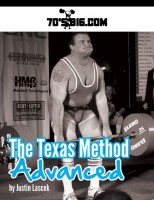PR Friday
Post your mudda crunkin’ training PR’s, PB’s, and DD’s to the comments. Add in ‘yo training updates too, son.
Weekly Challenge
Last week’s challenge was to “add in a day or two of conditioning after your training session(s)”. Anybody do this? How’d you feel? Not something that’ll interfere with training, eh? Think it’ll help with regular daily activities or fun?
Next Week’s Challenge: Eat vegetables in at least one meal every day.
Not very 70’s Big? Where’s the burgers and ice cream? I’m not afraid to say that I want to set an example for everyone. Honestly? Honestly? HONESTLY? I want you banging your wife at 80 years old after you do a powerlifting meet. That’s what I want. If you eat like someone who doesn’t do the “purge” part, then we aren’t accomplishing anything. This is an EXTREMELY simplified way to say this, but: a cleaner, higher quality diet is going to reduce your overall systemic inflammation and allow you to recover better. That means better progress. That means your wee wee in the hole hole when you’re a FOG. Cha-CHING! Do eet.
Weekly Recap
On Monday I wore cool sunglasses and gave weak-backed ladies and guys something to do at the end of training. On Tuesday I released the BIG KAHUNA, the biggest even of everyone’s lives, the ravishing, the outstanding, The Texas Method: Advanced book that will remove three inches from your shorts and turn your skin eight shades darker upon purchase. No lie. Wednesday I got to drive all day, but Chris is a champion and Nolan is competing at IPF Raw Worlds. Thursday I pointed out that a 300 pound squat for a guy is unimpressive. Every man can squat 405; it might take more effort for some than others, but it’s doable. I promise.
I’m travelling to Washington DC to get kicked in the balls at the GoRuck Challenge starting at 9PM. It was probably an excellent idea to travel and then do it. I told the fine folks at GoRuck that I was going to do a post on training for the GoRuck. I’m still gonna do this, but I figured a post of the aftermath would be more sufficient given that I’ll know what I did or did not do correctly. I’m sure the event will teach me a lot, but at the very least clarify the stressors that are similar to the first day in most military SOF selection courses. How do you prepare for a kick in the balls? You can’t; you just smile when it happens.
I thought it was really funny to see former infantry guys say, “Why the fuck would I want to do that? I had to do that for 4/6/8 years in the Army/Marines.” I get it, and they’re right. But something like this is a test of mettle for someone who hasn’t done it. It’s also apparently good at team building. At the very least, it’ll allow someone to learn or remind themselves what their limits are (instead of doing a 25 minute workout and feeling empowered). Should be fun. Interesting? I’ll let ya guys know.


